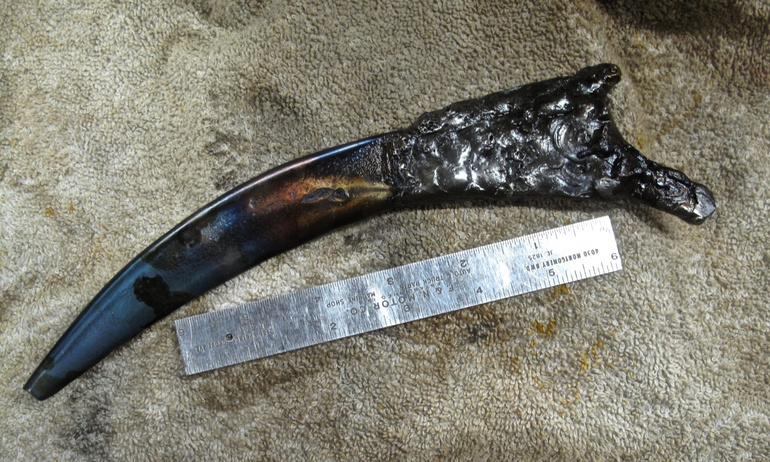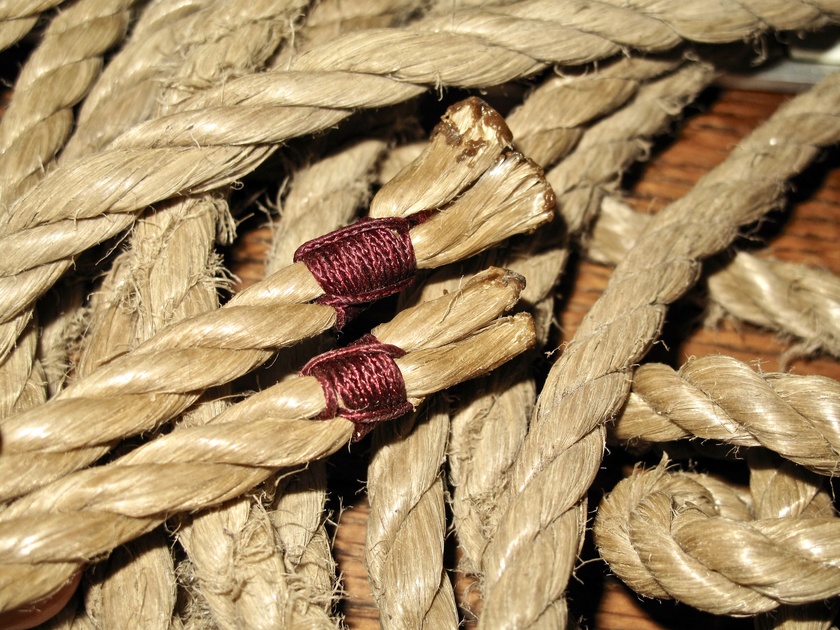It started life as a 30-gallon drum that was rusted through and crushed.

Cutting the blank out was easy enough with my angle grinder and nibbler, but she still has a long way to go before I can call her a Scythe Proper.
I've been curiuos about scythes for awhile, but never thought about making one since I don't have a power hammer to help ease the work load. Then I ran across a video on Rob Stephens' channel on Youtube.
Rob's something of a scything guru and posts great videos of him using quite a variety of scythes. When I saw that one of his "antique" blades was actually made from sheet metal that was riveted to a thicker steel spine.... I was curious.
The Tyvack style of scythe appears to be a late-comer to the industry. While traditional blades are forged from a big bar and have a cross-section that tapers from spine to edge, the folks at Tyvack opted to use sheet metal for the majority of the body.
Without seeing an original blade in person, all I can do is guess and hope. The thickness of the drum's body mighty be too thin, but it'll work well enough for a prototype.
What did impress me is how fast the blade stiffened up when I started tensioning it with my cross-peen. You wouldn't think those little divots would make much of a difference, but they sure do!

My design differs from the Tyvack blades I've seen online in that it's cupped. While I wanted to keep it flat like I'd seen in my research, it quickliy became apparent that I'd cut the blank out too wide for as thin as the steel sheet is.
If I'd made the blank only about 2" from spine to edge, the thickness of the metal might have been good enough. Going wider like I did, though, allowed for too much flop.
The good news is that I can always trim the blade down. Without the spine on it, I'm just guessing at how she'll perform. If after the spine's riveted in place I see that she's hellfurstout enough, I could slim the whole design a bit just to play around with different configurations.
No matter what, this is going to be what you call a "grass blade". There's not enough mass in the body to stop it from simply crunching if I hit a rock or woody stem in something, so there'll be no ditch clearing in her future!
















